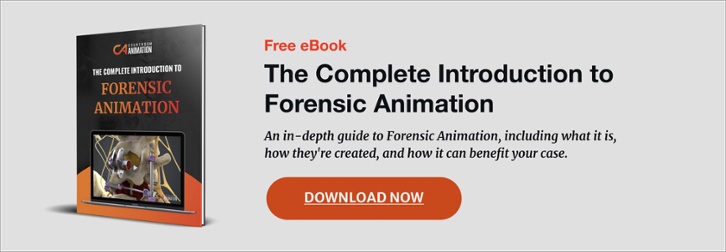In the late 1800s and early 1900s, medical visuals were limited to charts, 2D diagrams, and basic illustrations. The first well-known occurrence of these types of visuals was in 1894, as Max Brödel began to illustrate surgeries at the Johns Hopkins Hospital.

Brödel’s Illustrations of Cushing’s Transsphenoidal Operation
As modern computer technology advanced, so did medical graphics. While medical animations originated to fulfill educational needs, they have become an increasingly valuable resource for civil attorneys in the past several decades.
To express your client’s narrative in today’s technologically-advanced world, compelling medical graphics are essential.
There are many factors that go into developing and leveraging legal medical animations. Thus, we have compiled a number of articles to provide a foundational level of knowledge to help you during every legal stage:
How Do You Create 3D Medical Animation?
What Common Mistakes Do Attorneys Make with Medical Graphics?
What Benefits Do Medical Animations Have in Court?
Can Medical Animation Videos Explain Complex Cases?
Is 3D Medical Animation Worth the Investment?
Are Medical Legal Graphics as Beneficial as Medical Animation?
Who are the Best Legal Medical Animation Companies?
What Don’t I Know About Medical Illustrations?

Free Pricing Guide:
How Much Does a Legal Animation Cost?
Medical animation and graphics have a memorable impact in litigation, but how much does it cost to obtain one?
Download our free pricing guide to discover:
- Cost factors of settlement & trial animations
- The bidding process
- Pros and cons of different medical animation companies
- And more!
Sample Surgery Animation from Courtroom Animation
What is medical animation?
In the legal industry, a medical animation is a video demonstrating an expert’s opinion or a witness’ testimony related to your case. The global market of medical animation is rapidly expanding, and its use within the legal industry is no different.
It is well known by the top performers in the litigation community that attorneys need to use visual demonstrative evidence, such as medical animation, during mediation and trial.
What are medical graphics?
Similar to medical animation, legal medical graphics are still images used by attorneys for various purposes, such as timelines, diagrams, and more.
How Do You Create 3D Medical Animations?
Visual litigation strategies have advanced far from the grainy 2D images from the 1990s as computer technology has evolved. Part of that evolution stems from major software improvements.
Most expert witness data can be fed into a software that medical animators use to create 3D models and environments. These types of data sets include:
- Car speeds from accident reconstruction reports
- Surgery data from medical professionals
- Environmental data
- And more!
Because these are real-world data sets, any court exhibits created from them are accurate and therefore more likely to be admissible.
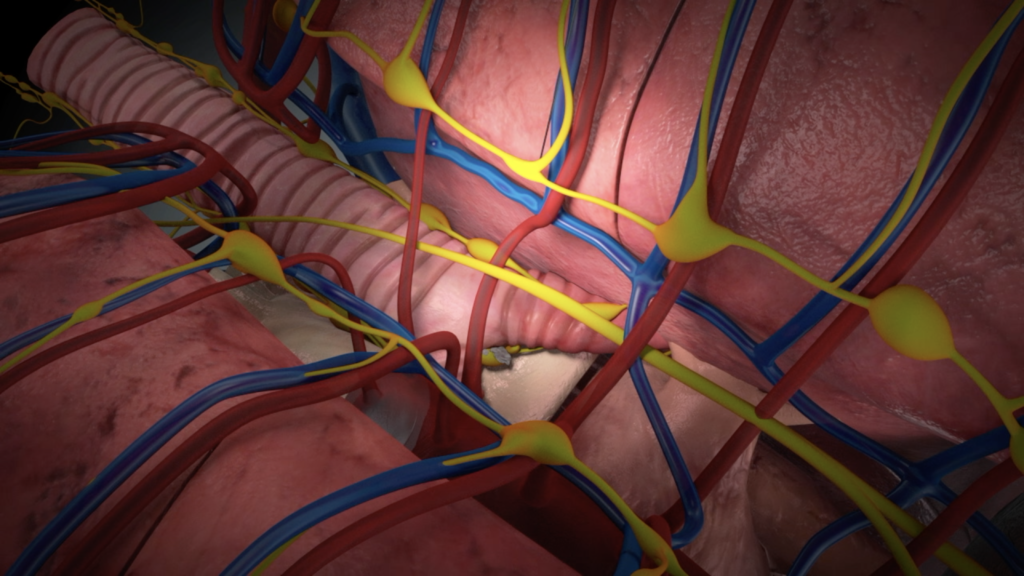
Sample 3D Medical Illustration
If you want to learn more about how 3D medical animations are created, download our free eBook, “The Complete Introduction to Forensic Animation.”
Now, let’s move onto the first question that law firms and attorneys most often ask us. Before you learn how to best leverage these visuals in court, it’s imperative to understand what you should not do with them.
What Common Mistakes Do Attorneys Make with Medical Graphics?
Did you know that the global medical animation market is expected to reach $488 million by 2026? Attorneys are taking control of this opportunity to add a memorable and compelling visal to their case, but not always in the most effective manner.
There are three common missteps that attorneys often make when sourcing and leveraging medical graphics for their case. These include:
- Using a limited selection of still images
- Forgoing medical expert collaboration
- Undervaluing the impact of these visuals throughout the entire litigation process

Medical Graphic Sample from Courtroom Animation
Using Limited Visuals
Which do you think would be more impactful on their deliberation process and elicit a stronger emotional response? A single still image showing a diagram of the surgery, or a forensic animation that demonstrates the surgery from multiple perspectives?
“The question is no longer whether to use graphics in the courtroom, but rather how to do it most effectively.”
– Kerri Ruttenberg, Former Partner & Trial Lawyer at Jones Day
Ask yourself, “What image do I want the jury to remember from my closing argument?”
Using Visuals Without Medical Expert Collaboration
If you have complex operative reports to introduce to the jury, a visual can strengthen your argument, but it needs to be reviewed by a medical expert. Once they review the visuals and testify, or give their deposition, they can report that it is medically accurate.
To avoid this mistake, ask the 3D medical animation company you’re partnered with if they have a recommended medical professional they use for their medical graphics.
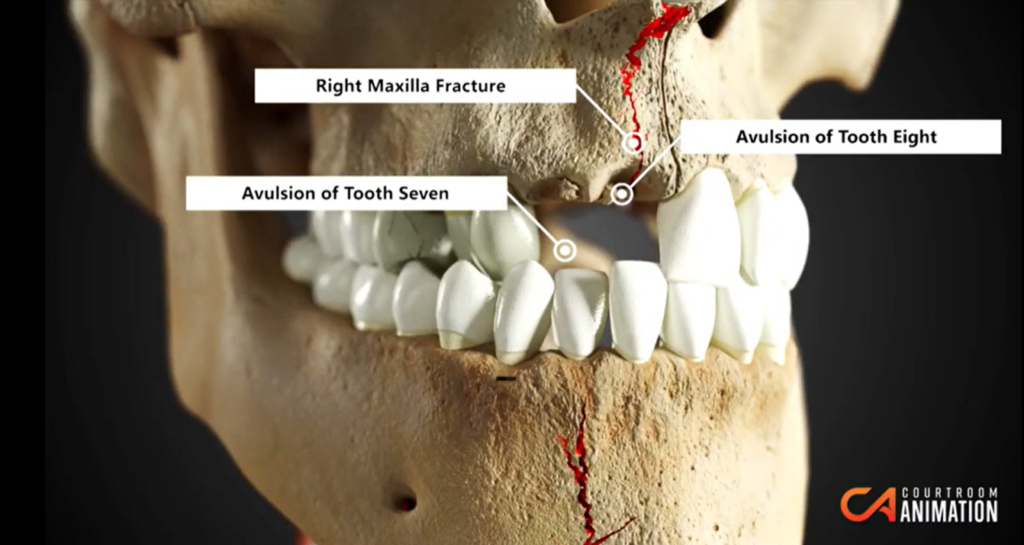
Sample Medical Animation from Courtroom Animation
Assuming Visuals are Only Useful During Trial
If you want to receive a successful settlement as soon as possible, don’t hold off on contacting a 3D medical animation studio to create your medical illustration.
If your case goes to trial, you can still use your medical stills and admit new ones to address any new arguments in your case. If you have an up-coming mediation date, find a studio that can work with tight deadlines.
Now that you know what to avoid, let’s discuss what medical drawings can do for your case.
What Benefits Do Medical Animations Have in Court?
Medical animation is a similar term to forensic animation — their uses overlap in litigation, but both have their own specialties that work for different cases.
3D medical animation can:
- Visualize Your Client’s Medical Journey
- Establishes Credibility
- Unravel Complex Medical Terminology
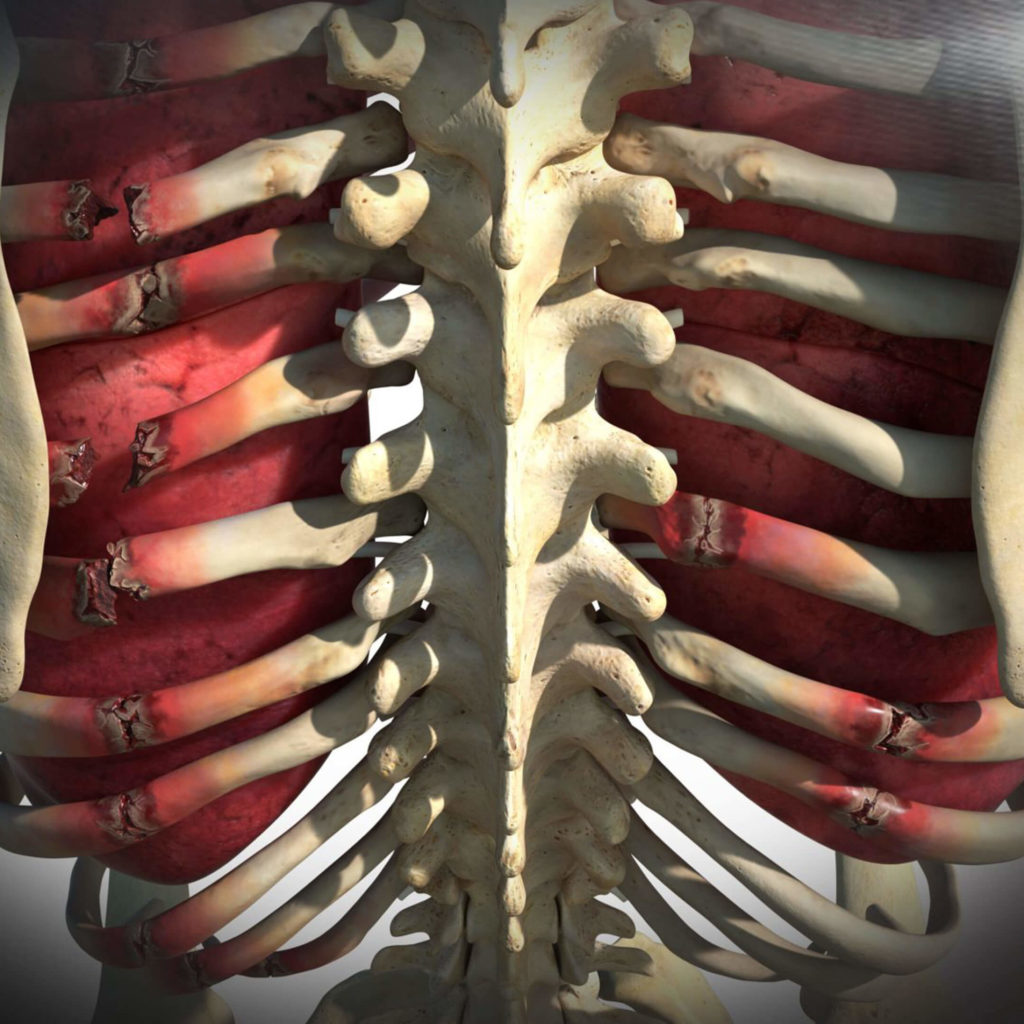
3D Medical Graphic Sample from Courtroom Animation
Visualize Your Client’s Medical Journey
In a civil negligence case, a 3D medical animation can show various perspectives during procedures, or focus on the injuries sustained before or after.
When plaintiff attorneys use medical animations to help tell the core part of their argument, it fosters empathy for what their client(s) went through. If in trial, this is a persuasive strategy for gaining a more favorable verdict.
And when defense attorneys use it, they can help remove emotion and simplify complexities into an easy-to-follow narrative. If you are on the defense’s legal team, a 3D medical animation studio can develop visuals to reinforce your expert’s testimony. This provides support by visually explaining how your client was not liable and providing more credibility.
Establishes Credibility
A medical animation adds credibility to both defense and plaintiff attorneys.
One of the common, avoidable missteps we see attorneys on either party make is that they do not collaborate with experts on their medical graphics.
It’s been found that the jury learns and retains more information when attorneys use medical illustrations. The use of court exhibits greatly improves the jury’s understanding of medical language used within a courtroom.
Complex Medical Terminology
Do you know what a “Right Maxilla Fracture” is? Most likely not, and it’s probable that most common people, like those on a jury, are also unsure.
Instead of orally explaining jargon-filled reports, surgery and other medical data, an accurate visual can do the heavy lifting. Any forensic animation company that offers medical animation services will have the ability to distill the most important data sets into a compelling visual.
These medical illustrations are not only limited to lengthy 3D medical videos. A medical animation studio can create visuals in various formats such as:
- Medical graphics & stills
- Surgery animations
- Summary of injury animations
- Timelines
- And more!
Don’t risk an unsavory settlement or verdict — learn how your civil case can be strengthened by a medical animation with a no-obligation quote today.
Can Medical Animation Videos Explain Complex Cases?
Legal exhibits, not just medical animation videos, are becoming more and more prevalent in the legal industry. Many courthouses have been renovated to include legal technology such as LCD projectors, monitors, and even Elmo technology.
What are the benefits of medical animation videos for defense and plaintiff parties with intricate cases? They can:
- Demonstrate different perspectives
- Clarify expert witnesses’ testimony or depositions
- Untangle confusing timelines
- Label anatomy & medical tools
- Shine an accurate spotlight on any summary of injury

Imagine you are a juror during a trial, and an expert begins explaining how an injury impacted the plaintiff. With whatever personal matters are on your mind, there’s a good chance that you might become distracted while they’re speaking.
If that speaker also played a minute-long traffic accident animation, you would have a better chance of absorbing that academic knowledge and remembering it at a later date.
Share the core themes of your case through a trial animation, rephrase complex language, and collaborate with your expert ahead of time to ensure a smooth process.
Unsure if your civil case can leverage medical animation? Download our free checklist, “How to Prepare Your Case for Working with a [Medical] Animation Studio,” to find out.
For example, a traumatic brain injury can be hard to fully understand through verbal explanations alone. If your case has X-ray, MRI or other medical images, then a medical illustration can add labels for each body part.
With a case that covers a personal injury that happened months or years ago, a timeline can clarify what events took place at what time. A medical animation video that explains a mechanism of injury and accurately labels parts of the body will ‘wow’ any jury.
Is 3D Medical Animation Worth the Investment?
How are you using visuals in your medical malpractice or personal injury cases? Whether you stick to oral presentations or PowerPoint, a custom 3D medical animation can make all the difference.
Does your client’s case revolve around any of the bullet points below?
- Experienced an accidental injury
- Defending that they performed an error-free surgery
- Had an operation that deviated from standard medical care
- Failure to treat
- Misdiagnosis
- General personal injury or medical malpractice
A plaintiff and a defense attorney in mediation are similar to two generals trying to win a war. Sometimes they go to battle (trial), but if they can achieve a favorable outcome beforehand then they will do so. In this scenario, a surgery animation could convey the strength of one army, effectively casting doubt in their opponents.
Once the animation is revealed, the opposing party will realize that you are armed for trial. As they usually do not want to draw out the discussions or risk an unpredictable jury verdict, it gives them incentive to settle.
“Trial is about [the] story. And the best stories paint a picture in the mind of the listener.”
– Attorney Colin Jones of Wilshire Law Firm
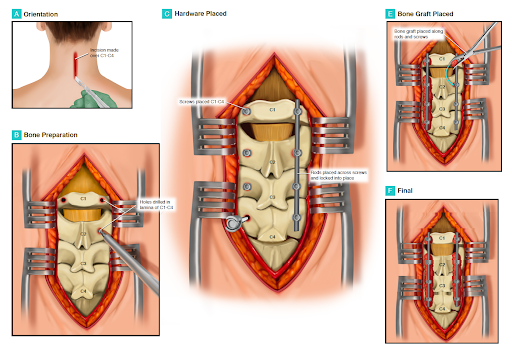
Spine Injury Animation from Courtroom Animation
An attorney can guide the jury’s attention and improve their perception of essential elements of their case while the medical animation video is playing. Alternatively, an expert can take control and walk the jury through their testimony with it.
Remember that animations are not simulations because they do not offer any conclusions or become a new piece of evidence.
There are five ways to ensure that your 3D medical animation videos are admissible:
- Share it with the opposing counsel early
- Have your expert testify to its accuracy
- Place it on the exhibit list as soon as you can
- Reveal it to the opposing expert
- Have your expert comb through it
In short, medical animation services are a worthwhile investment for attorneys aiming to secure a higher settlement or verdict for their client.
“Courtroom Animation was instrumental in our ability to show the experimental nature of the procedure. Their ability to create the rendering of the animation helped the mediator understand our case and enabled our expert to walk the mediator through the procedure…”
– Michael Grieco, Attorney at Romanucci & Blandin Law Firm
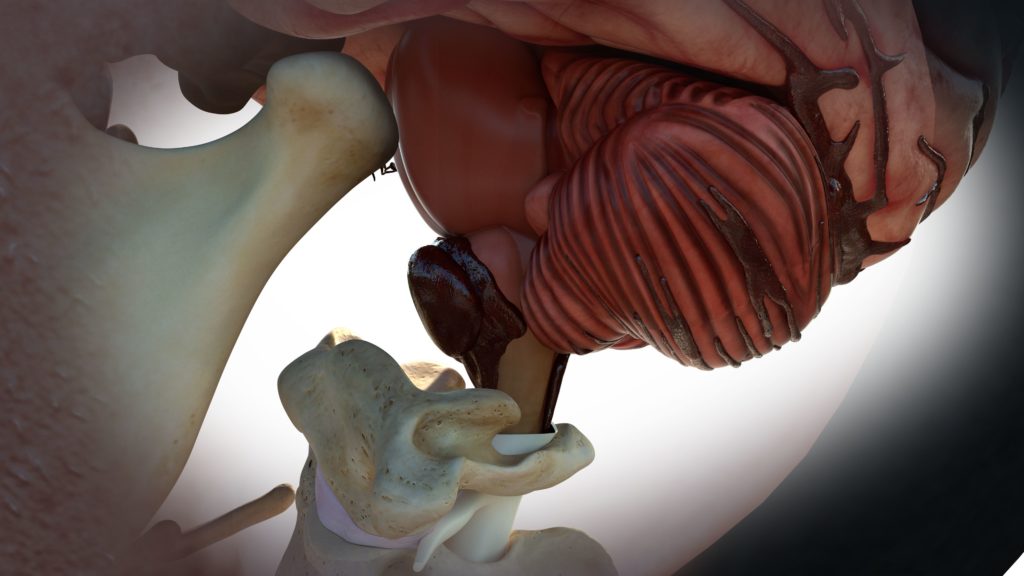
Traumatic Brain Injury Animation Sample from Courtroom Animation
Are Medical Legal Graphics as Beneficial as Medical Animation?
During one medical malpractice case, medical legal graphics created a foundation for portraying the plaintiff’s medical journey. A one-minute video made all the difference in determining liability, and the end result was an $8 million settlement.
The plaintiff’s counsel wanted to highlight the doctor’s perspective during the surgery – and how the doctor’s limited vision contributed to their client’s injury. Without the medical legal graphics, it would be near impossible to fully contextualize for the jury what the doctor could see throughout the surgery.
Since the procedure was already completed, and there were no photos from the surgery, there was no other way to visualize it.
We ensured that our medical illustration services were scientifically accurate, and therefore the graphics were admissible. This was done with close coordination between our animation team, the plaintiff attorneys, and the medical expert witnesses.
Since the procedure was already completed, and there were no photos from the surgery, there was no other way to visualize it.
We ensured that our medical illustration services were scientifically accurate, and therefore the graphics were admissible. This was done with close coordination between our animation team, the plaintiff attorneys, and the medical expert witnesses.
What Don’t I Know About Medical Illustrations?
You might not know that medical illustrations are technically categorized as demonstrative evidence.
What is demonstrative evidence?
Demonstrative evidence consists of objects or visuals that visualize and clarify testimony, depositions, or other pieces of data. It is not real evidence, testimony, or other forms of evidence used in litigation.
In 2014, the Southern District of New York Judge Jack B. Weinstein labeled computer-generated exhibits as “pedagogical devices,” and separated them into five demonstrative categories:
- Static Images
- 2D or 3D Animations
- Simulations
- Computer Models
- Enhanced Images
What’s the difference between 2D and 3D animation?
2D animation was usually hand-drawn, while modern 3D animation uses computer animation software to create realistic and accurate visuals.

Medical Illustrations Have Been Used Since The 1960s
Widespread use of 2D and 3D demonstrative evidence in United States courts did not begin until the mid to late 1900s. One of the first uses of demonstrative visuals was in 1985, when Delta flight 191 crashed.
In 2006 the American Bar Association found that “…25% of firms with 50 to 99 attorneys used [legal] technology in 2007, vs. 4%.” While that was several years ago, the use of computer animation in the legal industry has only grown as more and more attorneys expand their skill sets.
Both Plaintiff and Defense Attorneys Can Leverage Medical Graphics
Plaintiff attorneys have historically used medical illustrations to highlight injuries and damages, surgical errors, and more. Animations equip personal injury attorneys with the power of visual narratives to achieve multi-million dollar verdicts, such as in this surgery animation case study.
However, defense attorneys can draw advantage of a forensic studio’s medical animation services. A visual can help tell or enhance a narrative about how a medical professional was not liable during a surgery or diagnosis.
Medical Animations Are Useful in Every Legal Stage
In mediation, medical illustrations indicate that you are ready for trial and have a solid case. During pre-litigation, plaintiff attorneys can use medical videos to ensure they properly understand the details of the case before filing a claim.
If the opposing counsel has compelling visuals while you do not, it leaves you at a disadvantage. In fact, the Federal Judicial Center found that when one party presented legal graphics to a jury and the other did not, the party with an animation had a higher chance of a favorable verdict.
Medical illustrations can be used by any civil attorney at any time during a civil case — as long as they are admitted well ahead of schedule.
Who are the Best Legal Medical Animation Companies?
The best legal medical animation companies are the ones who create animations best suited to your case’s needs. They should have a high admissibility rate for their medical graphics, flexibility with their medical animation services, and collaborate with your team to ensure you have a compelling visual strategy.
Courtroom Animation is proud to note that we have a 99% admissibility rate for our 3D medical graphics and other forensic animations. Our animators have supported more than 2,000 cases, and have helped attorneys reach over $1 billion in results.
Have more questions about medical animation? Check out our free eBook that covers everything about 3D medical illustration and more.
